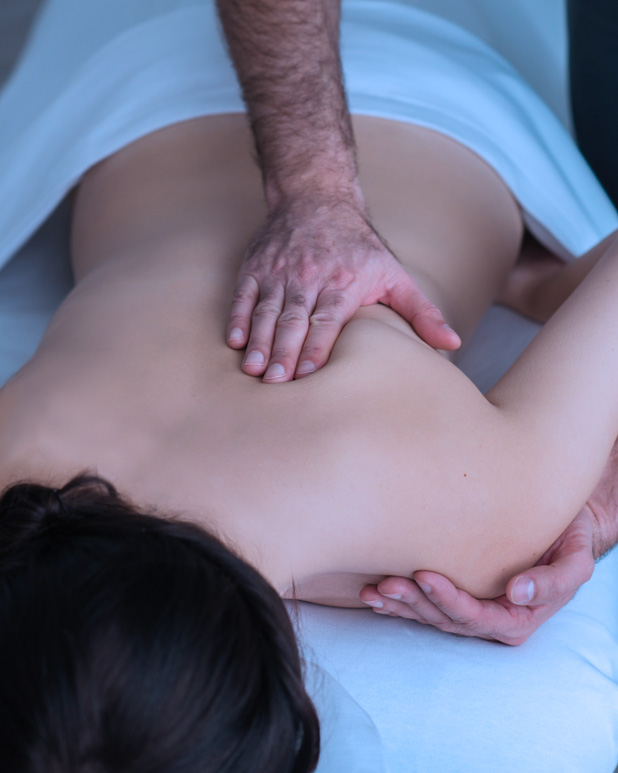Find a therapist
The Network of professional massage therapists of Quebec brings together more than 8,000 massage therapists
Member and insurer access
Find a therapist
The Network of professional massage therapists of Quebec brings together more than 8,000 massage therapists
The term orthotherapy comes from the prefix ortho- which means “right” or “correct” and expresses well the idea of this discipline. Indeed, orthotherapy aims at rebalancing the musculoskeletal system by mostly intervening on the muscular system.
Orthotherapy is a natural therapy that combines massage therapy to kinesitherapy (therapy by movement) and is intended for people who suffers from muscle pain and joints stiffness, which are usually caused by a bad posture or sudden and repetitive movements.
This discipline is a specialization that allows the therapist to further his understanding of the anatomy and physiology of the human body. The level of knowledge as well as the techniques are more advanced. Therefore, an orthotherapist has many tools to better respond to the specific therapeutic needs of his clientele.

The orthotherapist first starts with a health questionnaire to understand the issues that motivate the consultation. Afterwards, he or she will make an assessment of the client’s muscle condition and of the mobility of the painful joints.
The orthotherapy care begins with an in-depth swedish massage to enhance the blood flow and relieve muscular tensions. Depending on the sore areas and the desire effects, the massage can focus on skin, muscles, tendons as well as ligaments and be combine with essential oils, rubefiants (a product with muscular action) or steamy heat (thermotherapy).
Once the muscles are warmed up, the orthotherapist will proceed to mobilizations, which are gentle and slow movements practiced on a body part or a joint in order to restore its mobility. Those mobilizations can be passive (be guided), active (executed by the client himself) or in opposition (the therapist opposes resistance to the movement). The mobilizations always remain in the client’s comfort zone and within the joint’s normal range of motion.
At the end of the session, the orthotherapist will suggest appropriate exercises and stretching to the client to increase the recovery speed and to avoid relapse. At last, the therapist will recommend some at-home cares such as thermotherapy, phytotherapy as well as aromatherapy if needed.
Find a therapist